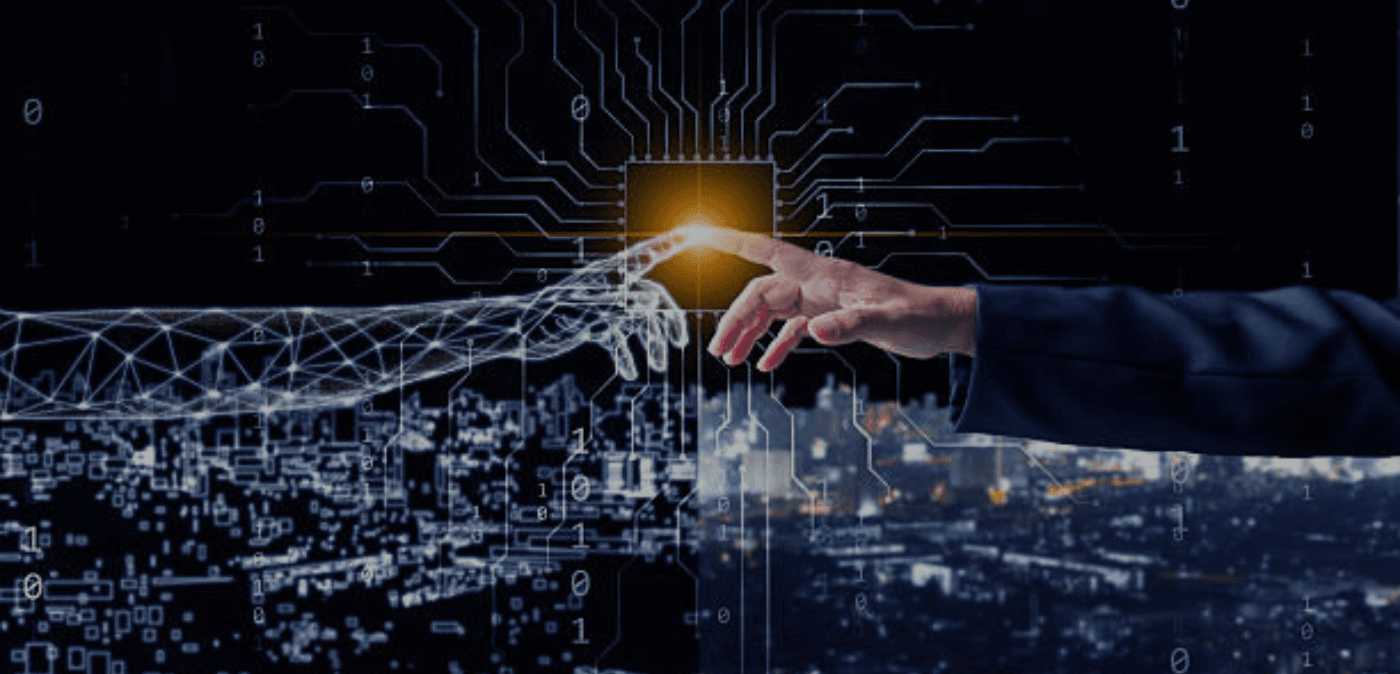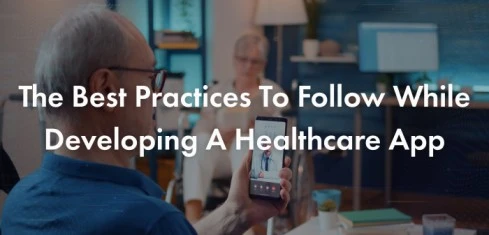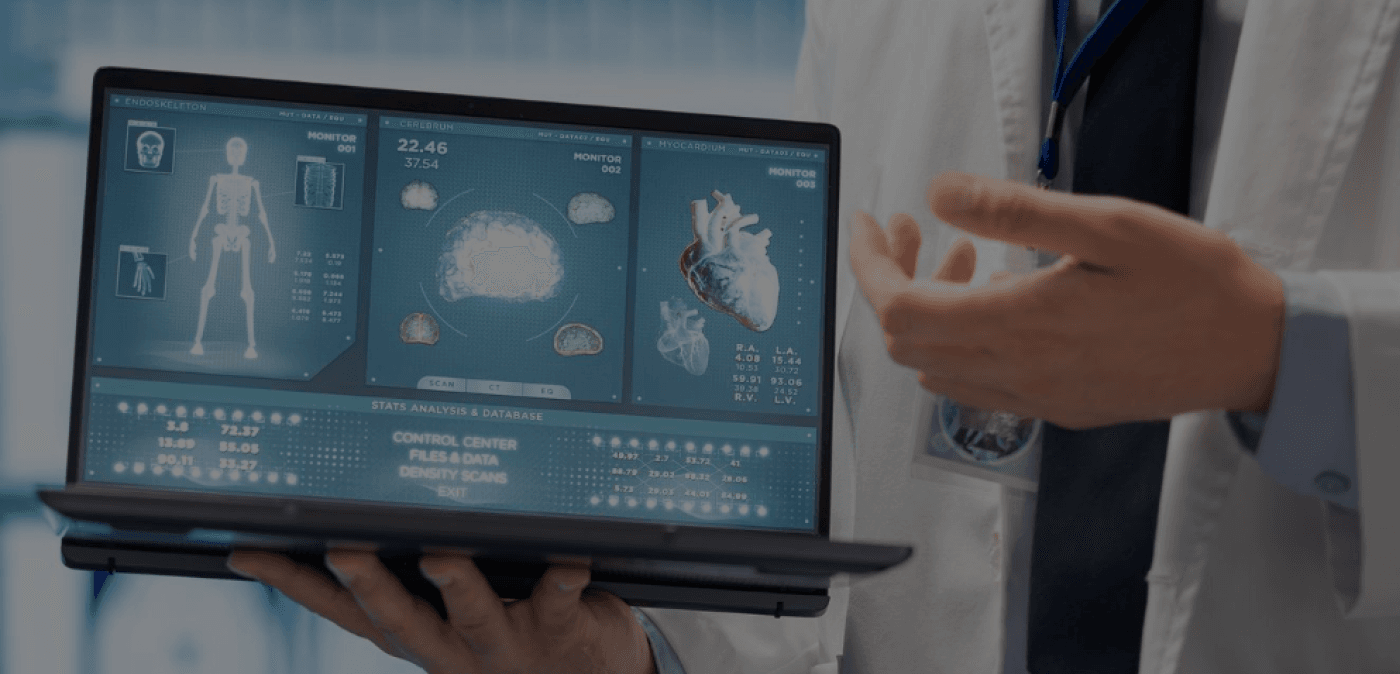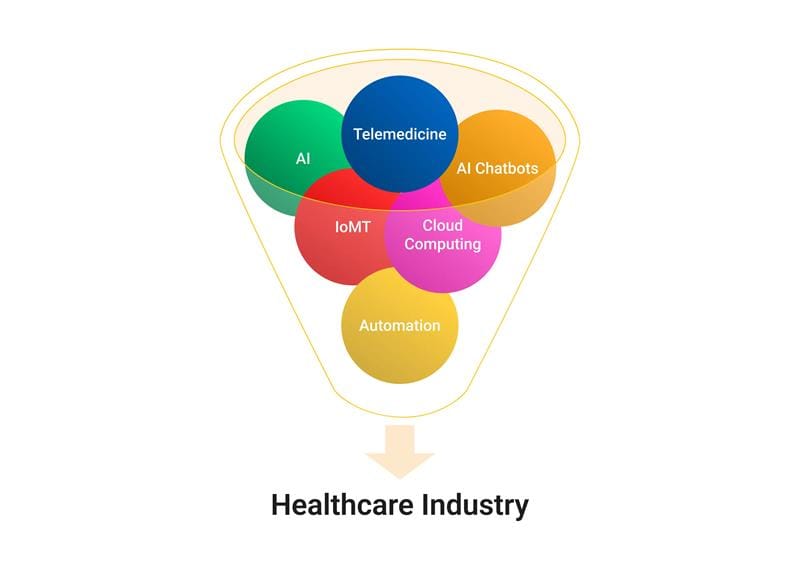 By Mohan S November 13, 2025
min read
By Mohan S November 13, 2025
min readHow Digital Twins revolutionize Healthcare today?
Healthcare is evolving at a rapid pace, and digital twins are at the heart of this transformation. By creating real-time virtual replicas of patients, organs, and entire hospital systems, Digital Twin (DT) technology in Healthcare enables predictive, personalized, and proactive care. From improving surgical outcomes to optimizing hospital operations and accelerating drug development, digital twins are bridging the gap between data-driven simulations and real-world decision-making.
As per Precedence Research, the global healthcare digital twins market is estimated to have been valued at USD 12.91 billion in 2023 and is projected to reach USD 259.32 billion by 2032 – a CAGR of around 39.8%. This rapid growth underscores how digital twin technologies are poised to redefine patient care, device design, and operational efficiency across advanced health systems.
Table of Contents
- What are Digital Twins in Healthcare?
- Types of Digital Twins in Healthcare
- Key Technologies Driving Digital Twins
- How Digital Twin Technology Works?
- Use Cases of Digital Twins in Healthcare
- Advanced Applications: Next-Gen Research Areas
- Real-World Examples & Case Studies
- Benefits of Digital Twins in Healthcare
- Challenges and Barriers to Adoption
- The Future of Digital Twins in Healthcare
- Accelerating Digital Twin Adoption in Healthcare
What are Digital Twins in Healthcare?
Digital Twins (DTs) are advanced virtual models that replicate physical entities such as patients, organs, or clinical workflows. They continuously update using live data from IoT sensors, electronic health records, and wearable devices. This allows clinicians to simulate treatment outcomes, monitor patient health in real time, and predict disease progression without direct patient risk.
Unlike traditional healthcare models, which rely on static snapshots of patient data, digital twins provide a dynamic, interactive, and patient-centered perspective. Hospitals can use DTs for process simulation, while physicians can test interventions virtually before implementation.
Healthcare digital twin examples include:
- Patient-specific organ replicas for pre-surgical planning.
- Hospital workflow simulations to optimize staffing and equipment usage.
- Virtual disease progression models for chronic conditions like diabetes or heart disease.
Types of Digital Twins in Healthcare
In Healthcare, digital twins come in several meaningful varieties. Each type serves a different purpose and addresses specific use-cases:
- Patient/Organ Twins: These are virtual models of a single patient’s organ (for example, a heart or lung) or an entire physiological system. They help simulate what might happen if a treatment is applied or how a disease may progress.
- Surgical Twins: Virtual replicas used to plan and rehearse surgical procedures. A surgeon can operate on the twin ahead of time, reducing risk when they operate on the real patient.
- System & Process Twins: These mirror hospital workflows, resource usage, patient flows, bed movements, and staffing patterns. By simulating these, hospitals can identify bottlenecks and test improvements in a virtual environment.
- Medical Device & Equipment Twins: Here, the twin models how a device behaves in or on the body or how a machine (for example, an MRI scanner) performs over time. This can help with maintenance, calibration, and patient-device matching.
- Population & Public Health Twins: While less common today, these twins represent groups of patients or entire populations. They simulate disease outbreaks, resource demand, or preventive strategies across a community or region.
Each type uses different data sets, serves different stakeholders (clinicians, operations teams, administrators), and scales differently. Recognizing which type fits your organization’s needs is key to successful implementation.
Key Technologies Driving Digital Twins
Behind every successful digital twin lies a network of connected technologies working in sync. From real-time sensors to intelligent algorithms, these tools enable accurate simulation, analysis, and prediction – turning data into actionable healthcare insights.

How Digital Twin Technology Works?
Digital twins rely on a continuous data flow:
IoT Sensors → Cloud Infrastructure → AI Algorithms → Simulation → Actionable Insights
Wearables and smart devices capture vital signs like heart rate, oxygen saturation, and glucose levels. These data points feed into cloud-based platforms where AI and machine learning models process the information to predict patient outcomes or simulate treatment responses.
Through advanced Healthcare App Solutions integrating IoT, AI, and FHIR-based architectures, real-time health data can be securely synchronized across systems to enable continuous, predictive insights.
Advanced AI architectures, including hybrid AI, graph neural networks, and neuromorphic computing, enable highly accurate modeling of complex biological systems. Essentially, a digital twin acts as a “virtual mirror” of patient health, allowing healthcare teams to experiment safely before implementing real-world interventions.
Use Cases of Digital Twins in Healthcare
Here’s how digital twin technology is actually being used – both in clinical settings and in operational workflows in the healthcare industry:
Clinical Use Case
- Personalized Treatment: A twin of a patient’s heart can be used to test how different therapies might affect that individual. This helps tailor medication, decide on device implantation, or forecast risk.
- Remote Monitoring & Chronic Care: For patients with chronic conditions (diabetes, heart failure, COPD), a twin fed with real-time wearable data can alert clinicians to worsening trends and support preventive care before hospitalization.
Operational Use Case
- Hospital Resource Planning: Hospitals simulate bed usage, staff deployment, and patient flow using a twin system. For example, they may model how a surge in admissions would affect waiting times and resource availability.
- Device Maintenance & Lifecycle: Equipment twins monitor usage, performance, and failure risk of expensive devices (imaging machines, ventilators). Preventive maintenance becomes targeted and efficient.
Clinical-Research Use Case
- Virtual Clinical Trials: Instead of relying solely on human trials, twins can simulate patient cohorts and responses, speeding up drug development, lowering cost, and improving safety.
These use cases show that digital twins are not just experimental – they are delivering value across both patient care and operational efficiency.
Advanced Applications: Next-Gen Research Areas
Looking ahead, digital twins are moving into even more advanced territories:
- Genomic/Cellular Twins: Virtual models that combine genomic, proteomic, and cellular data to simulate disease at the molecular level and test therapies virtually before real patient trials.
- Metaverse / Immersive Healthcare Environments: Twins within VR/AR environments for training, patient engagement, remote surgery, or virtual clinics.
- Digital Health Coaches: Everyday twins of patients that continuously update and provide personalized health coaching, lifestyle prompts, and preventive insights.
- Pandemic / Public-Health Twins: Simulation at population scale for outbreak prediction, resource management, vaccine strategy planning.
- Hybrid AI + Explainable Models: Digital twins that use deep learning plus rule-based systems so clinicians can understand why a recommendation is made (not just what).
These advanced areas illustrate how digital twins may not only support current healthcare delivery but also reinvent how care is conceived, planned, and delivered.
Real-World Examples & Case Studies
- Mater Private Hospital (Dublin, Ireland) used a digital twin of its radiology department (3D modeling + workflow simulation) to redesign infrastructure and reduce patient waiting times for CT/MRI scans.
- Gloucestershire Hospitals NHS Foundation Trust (UK) created a hospital-wide digital twin covering multiple hospital units (75 units/buildings) to simulate patient flows and resource usage across elective & non-elective pathways.
- Hatyai‑Namom Cancer Center (Thailand) implemented a five-layer digital twin framework in its chemotherapy department to optimize outpatient flows, staffing, and personalized care.
Benefits of Digital Twins in Healthcare
Digital twin technology is redefining healthcare delivery by merging patient data, AI models, and real-time monitoring into a single, continuously learning system. While many studies explore its clinical potential, the true competitive advantage lies in how hospitals operationalize it – that’s what our analysis focuses on.
Key Benefits of Digital Twin Implementation:
- Personalized & Predictive Care: Simulates patient-specific scenarios to forecast outcomes and prevent complications before they arise.
- Reduced Clinical Risk: Enables clinicians to test treatments virtually, minimizing surgical errors and adverse drug interactions.
- Operational Efficiency: Optimizes patient flow, staffing, and resource allocation across departments.
- Accelerated Research & Innovation: Shortens clinical trial timelines and supports real-world validation of therapies.
- Cost Savings & Sustainability: Cuts unnecessary procedures, lowers hospitalization costs, and supports eco-efficient operations.
Digital twins are shifting Healthcare from reactive to predictive, ensuring every medical decision is supported by data-backed foresight. Hospitals and research centers adopting this model report improved accuracy, faster diagnoses, and reduced system strain – findings supported by our ongoing research and insights from global implementations.
Challenges and Barriers to Adoption
Despite its potential, the road to large-scale digital twin adoption remains steep. Based on our research and industry mapping across the U.S. and Asia-Pacific healthcare systems, five major barriers consistently surface:
- Data Privacy & Security: Managing sensitive health data within HIPAA and GDPR frameworks requires robust encryption and role-based access.
- Interoperability Issues: Legacy EHR systems and incompatible data formats slow real-time synchronization.
- Workforce Readiness: Clinicians and IT teams need training to interpret and apply digital twin insights responsibly.
- Implementation Cost & Scalability: Building and maintaining twin models at enterprise scale demands long-term investment and infrastructure readiness.
- Ethical & Regulatory Governance: Transparency, algorithmic accountability, and patient consent remain key to sustaining public trust.
Industry analyses indicate that successful adoption depends on strong data governance, interoperability frameworks, and clinical collaboration. Addressing these early unlocks the full potential of digital twins, balancing innovation with trust.
The Future of Digital Twins in Healthcare
Digital twins are evolving beyond simulation:
- Digital Health Coaches: Personalized guidance and behavioral insights.
- Hybrid AI Integration: Combining deep learning with symbolic reasoning for explainable models.
- Smart Hospitals: Real-time feedback loops for resource allocation and patient monitoring.
- Equitable Access: Open-source frameworks and public-private partnerships to expand DT adoption globally.
Accelerating Digital Twin Adoption in Healthcare
Implementing digital twin technology in Healthcare isn’t just about building models – it’s about orchestrating interoperability, compliance, and real-time data intelligence across clinical ecosystems.
To make this transition effective, healthcare enterprises often need strategic partners capable of integrating IoT, cloud, AI, and FHIR-driven data models seamlessly.
That’s where collaboration with experienced healthcare technology teams becomes essential.
At Fortunesoft, we empower healthcare organizations through Healthcare App Development expertise to:
- Develop custom digital twin–ready solutions that unify patient, sensor, and clinical data for actionable insights.
- Leverage AI-driven, patient-centric apps that support predictive and precision medicine across specialties like cardiology, oncology, and orthopedics.
- Ensure secure, scalable deployment through compliance-aligned architecture and end-to-end cloud integration.
Healthcare enterprises partnering with technology experts like Fortunesoft can reduce time to innovation, lower operational costs, and elevate patient outcomes through intelligent digital twin ecosystems.
Conclusion
Imagine practicing a surgery on a patient’s living digital double – that’s what digital twins make possible. They bring Healthcare closer to a future where every decision is simulated, optimized, and validated before it touches a patient. From personalized treatment planning to predictive hospital operations, digital twin technology transforms Healthcare into a continuously learning ecosystem.
As healthcare systems evolve, the real differentiator won’t just be access to data – it will be how intelligently that data is mirrored, modeled, and acted upon. Partnering with a trusted technology ally like Fortunesoft helps organizations bridge this gap, integrating IoT, AI, and interoperability frameworks into scalable, compliant digital twin ecosystems.
The result? Smarter decisions, safer outcomes, and a connected care continuum that learns and improves in real time. The digital twin revolution isn’t coming – it’s already here.
FAQs
- What is a digital twin in Healthcare?
A digital twin in Healthcare is a virtual model of a physical entity – such as a patient, medical device, or hospital system. It continuously collects and analyzes real-time data from IoT sensors and electronic health records to simulate outcomes, predict risks, and improve clinical decisions.
- How do digital twins work in patient care?
Digital twins use data from wearables, imaging systems, and lab results to create a real-time virtual replica of a patient. AI and machine learning algorithms process this data to simulate treatment responses, enabling clinicians to personalize care and predict disease progression more accurately.
- What are the main benefits of digital twins in Healthcare?
They enhance predictive diagnostics, reduce hospital readmissions, optimize treatment plans, improve device maintenance, and streamline hospital operations. Essentially, digital twins bridge the gap between data and actionable insights for better patient outcomes.
- What technologies power healthcare digital twins?
Core technologies include AI, IoT sensors, cloud computing, data analytics, and FHIR-based interoperability standards. Together, these enable seamless real-time data exchange and high-fidelity simulations within healthcare app ecosystems.
- Are digital twins already used in real hospitals?
Yes. Hospitals and research centers worldwide are experimenting with digital twins for cardiology, oncology, and surgical planning. For instance, Philips’ HeartModel and Siemens Healthineers’ patient twins are early real-world applications improving clinical accuracy and workflow planning.
- What are the challenges of implementing digital twins in Healthcare?
The biggest hurdles include ensuring data privacy (HIPAA/GDPR compliance), managing massive real-time datasets, standardizing interoperability, and maintaining ethical transparency when using AI for clinical decisions.
- How do digital twins differ from traditional simulations?
Unlike static simulations, digital twins are dynamic – they update in real time as new patient or system data arrives. This continuous feedback loop makes them more accurate and useful for personalized medicine and predictive analytics.
- Can digital twins support healthcare app development?
Absolutely. Many modern solutions built by a leading Healthcare App Development Company now integrate digital twin–ready features that combine IoT data, AI-driven analytics, and interoperability frameworks like HL7 FHIR. These enable predictive monitoring, precision medicine, and smarter clinical decision-making across healthcare ecosystems.
- What’s the future of digital twin technology in Healthcare?
Digital twins are moving toward system-wide adoption, combining genomics, behavioral data, and AI for precision health at scale. The future points to virtual patient populations, AI-assisted clinical trials, and continuous learning models that redefine digital healthcare ecosystems.
Sources
- Precedence Research: Global Digital Twin Market in Healthcare Report (2023–2032)
- Statista: Digital Twin – Statistics & Facts
- JMIR: The Role of Digital Twins in Healthcare: A Scoping Review (2025)
- MDPI – Future Internet: Digital Twin for Healthcare 5.0: Architectures and Applications (2025)
- PubMed Central: Patient-specific Cardiac Digital Twin for Predictive Modeling (2023)
Author Bio


 Facebook
Facebook Whatsapp
Whatsapp LinkedIn
LinkedIn Pinterest
Pinterest















 Start Chat
Start Chat